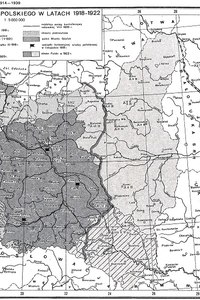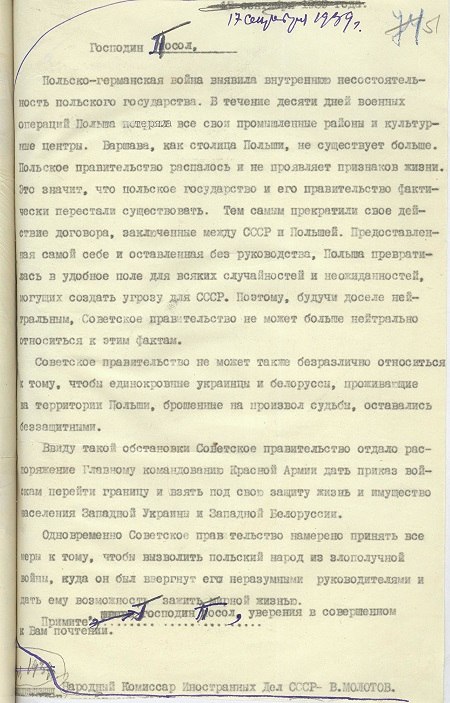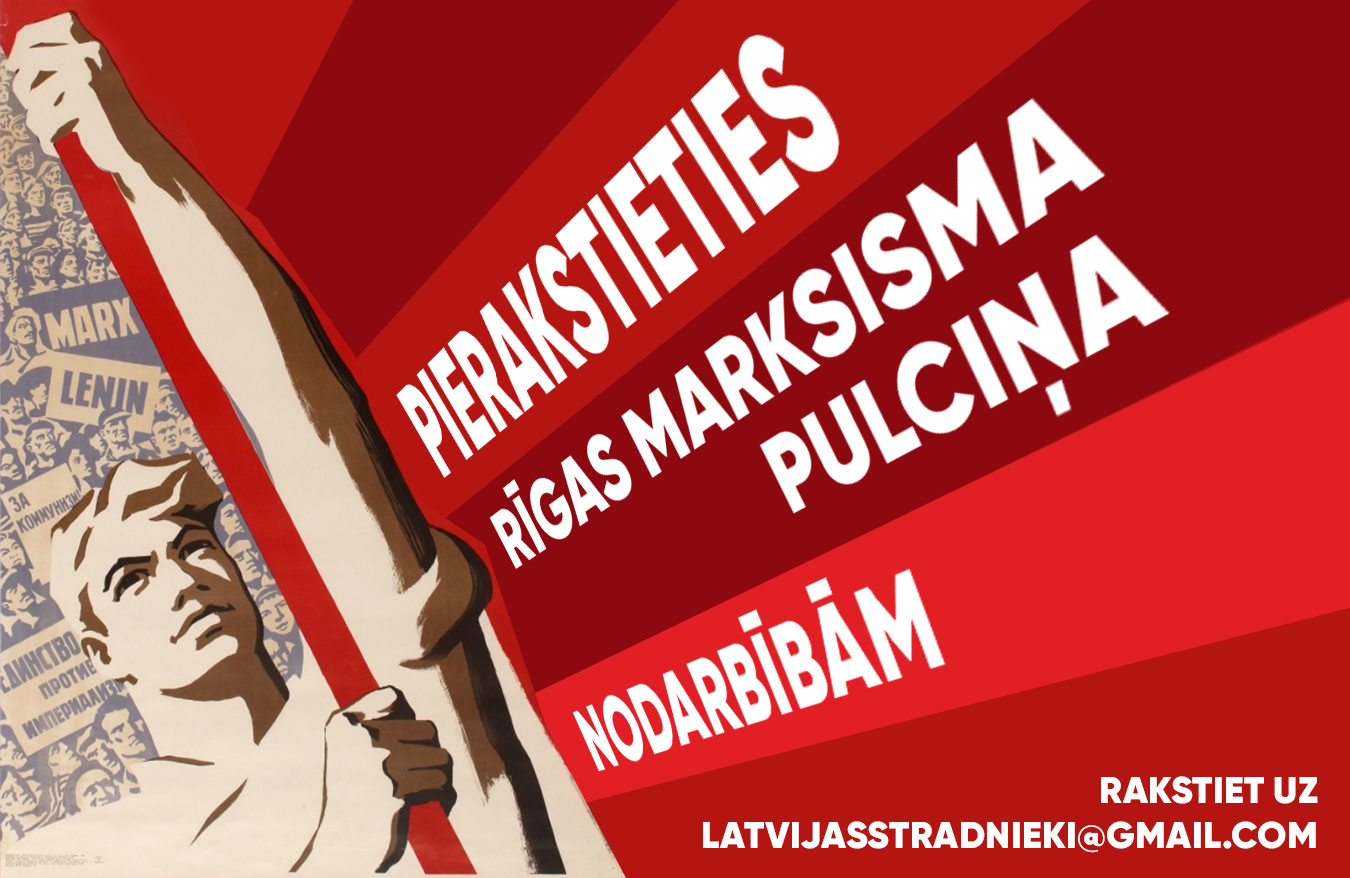Quote from a history textbook:
“The Soviet Union helped to defeat Poland in Germany. Invaded Eastern Poland on September 17. USSR entered the Second World War and became the war state. USSR tried to justify its aggressive actions against Poland by putting forward unacceptable arguments from the point of view of international law. A note was presented to the Polish envoy in Moscow, stating that the Polish state and its government ceased to exist (the Polish government left the state on September 17 and went to Romania. In the understanding of international law, a state continues to exist if, temporarily, its government cannot fulfill its functions) and the Soviet Union must protect the inhabitants of Western Ukraine and Western Belarus and their property.” [source]

As a result of the Polish campaign, the Soviet Union occupied the territory, the majority of whose population were Ukrainians and Belarusians. This territory was conquered by Poland as a result of the Soviet-Polish war of 1920. In 1940, a new Soviet-Polish border was established approximately along the Curzon line 1. This line was established on the ethnic principle on December 8, 1919 by the Supreme Council of the Entente following the results of the First World War. Subsequently, this line was confirmed at the Tehran Conference in 1943 and today is the internationally recognized border between Ukraine, Belarus, Lithuania and Poland.
Poland was not a peaceful neighbor of the USSR and had aggressive plans. With regard to the population of the seized Belarusian and Ukrainian lands, Poland pursued a policy of forced assimilation. In 1938, a special decree of the President of the Polish Republic was adopted, which stated that Polish policy towards Orthodoxy must “consistently lead to the leveling of Russian influence in the Orthodox Church and thereby speed up the process of polishing among the so-called Belarusians” 2. By 1939, all Belarusian schools and gymnasiums were closed in Poland, and two-thirds of Orthodox churches were converted into Catholic churches.
In December 1938, the report of the 2nd (intelligence) department of the Polish General Staff emphasized: “The partition of Russia lies at the heart of Polish politics in the East… Therefore, our possible position will be reduced to the following formula: who will take part in the partition. Poland should not remain passive at this wonderful historical moment… The main goal is to weaken and defeat Russia” 3.

The note of the USSR Government to the Polish Ambassador on September 17, 1939 stated: “The Polish government has collapsed and shows no signs of life. This means that the Polish state and its government virtually ceased to exist. Thus, the agreements concluded between the USSR and Poland were terminated” 4. In the understanding of international law, the state has the following characteristics: the apparatus of power and administration, territory, population and sovereignty 5. The government of Poland left the territory of the country on September 17 and could not exercise state power and control. Most of the territory of Poland, including its capital, was in the hands of the invaders. The government of the USSR on this basis came to the conclusion that was set forth in the note.
After the entry of Soviet troops into the territory of Western Ukraine and Western Belarus, neither Poland, nor France, nor Great Britain declared war on the USSR. Moreover, on September 17, Polish troops received orders from their Commander-in-Chief, Marshal Rydz-Smigly, not to engage in hostilities with the Red Army: “The Soviets have invaded. I order to make a withdrawal to Romania and Hungary by the shortest paths. With the Soviets do not conduct combat, only in the case of an attempt on their part to disarm our units” 6.
Winston Churchill, in his radio address on October 1, 1939, said: “That the Russian armies should stand on this line was clearly necessary for the safety of Russia against the Nazi menace. At any rate, the line is there, and an Eastern front has been created which Nazi Germany does not dare assail.” 7
Here is another quote from the same textbook:
“After the defeat of Poland and the division of Eastern Europe, population movements followed. Thus, Germany and the Soviet Union hoped to strengthen the agreement on the division of the sphere of interest. Both major countries signed a secret protocol providing for the possibility of Germans from the zone of Soviet interests to move to Germany, and from the zone of German interests of living Ukrainians and Belarusians to the Soviet Union. The protocol also applies to Germans living in Latvia and Estonia. In the history of international law, there was no precedent. This is the only such agreement in which the two dictators, having agreed among themselves, determined the fate of other citizens living in sovereign countries.”
This is not the only such agreement. Campaigns on population displacement were carried out after the First World War. For example, under the auspices of the League of Nations, the population was exchanged between Turkey and Greece on a religious basis, and between Greece and Bulgaria – on an ethnic basis. 8
Share on Facebook